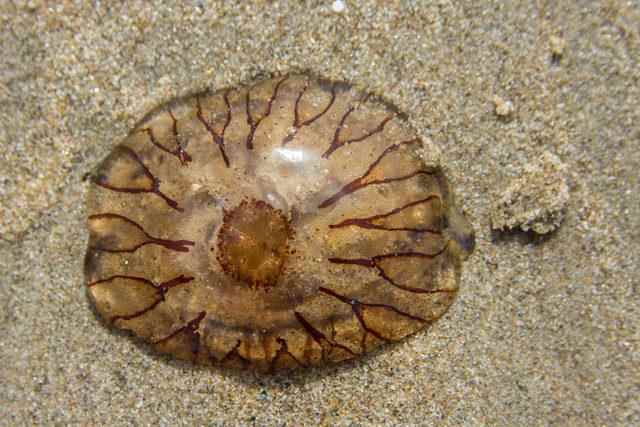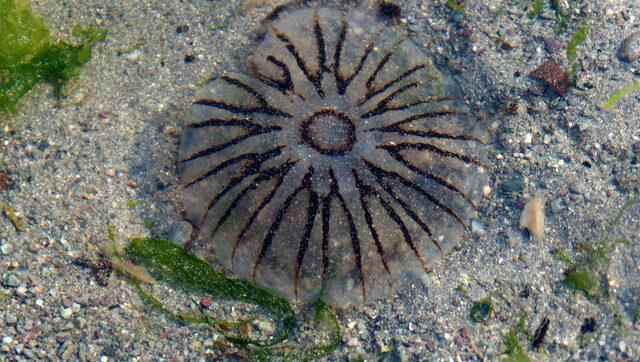Compass jellyfish was spotted in the Sea of Marmara. With the increase in temperatures, the poisonous compass jellyfish, which were displayed first in Tekirdağ and then in Istanbul, caused uneasiness in the citizens. It is stated that the biggest reason for the early sighting of compass jellyfish, whose arms can extend up to 1.5 meters and are poisonous, is air temperature. Compass jellyfish, which cross the Atlantic Ocean and the Mediterranean Sea and enter the Marmara Sea, continue to be seen on the shores of Tekirdağ.
The compass jellyfish, which is frequently seen in the Mediterranean and Aegean Seas, started to be seen frequently in the Marmara Sea with the 2000s. Jellyfish with arms up to 1.5 meters in length, which can be red, brown and yellow, have caused concern among citizens.
IF ON CONTACT, WASH WITH VINEGAR WATER
Speaking to Cumhuriyet, Turkish Marine Research Foundation (TÜDAV) President Prof. Dr. Bayram Öztürk said, “It has very little poison. It is not a species that will kill people and make their lives difficult. When people touch it, it is enough to wash the area with vinegar. It shows that the water quality of the Marmara Sea is bad. These are markers. It has been seen before, it is not new,” he said.

COMPASS JELLYSHIP EXPECTED TO SPREAD
prof. Dr. Bayram Öztürk stated that compass jellyfish are expected to spread to the coasts outside the Black Sea in the coming days. Emphasizing that there is no harm to the ecosystem for now, Prof. Dr. Öztürk stated that if there is an explosion in their numbers, it may cause odor.

“THE ORIGINAL DANGER CAME FROM THE SUEZ CHANNEL”
Referring to another issue he should be worried about about jellyfish, Öztürk said, “There are not only compass jellyfish but also migrant jellyfish that are not in the Marmara Sea and are known to come as far as İzmir. It is an alien species that came from the Red Sea via the Suez Canal. If they come to the Sea of Marmara and go to the North Aegean, there may be bigger changes in the ecosystem,” he said.
